Garden hoes are underutilized in modern gardens. When it comes to weeding and other outdoor chores, many gardeners are far more likely to reach for a shovel or hand trowel instead of a hoe. But we want to change that!
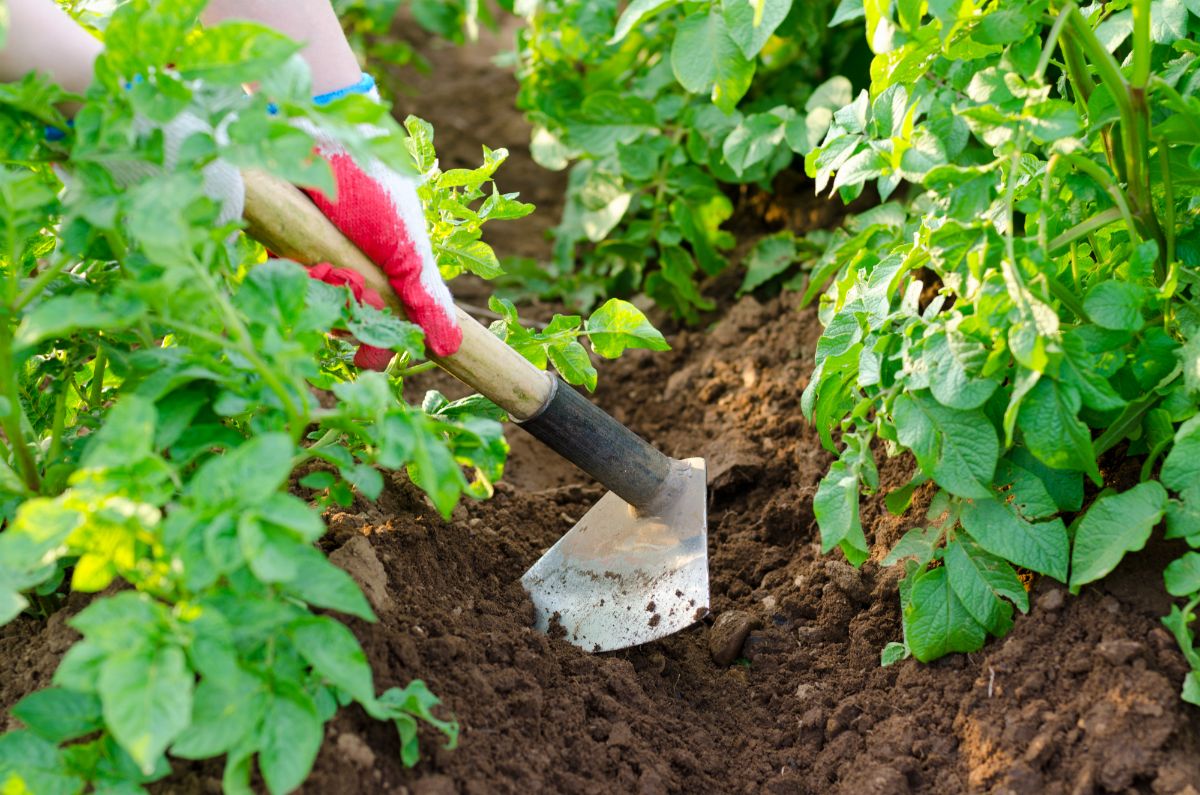
Hoes are very useful gardening tools for prepping gardens for planting, aerating soil, removing weeds, planting seeds, and so much more. In fact, these handy tools come in lots of different shapes that are especially suited for specific garden tasks.
In this article, we’ll cover some of the most popular garden hoe varieties and how best to use them in vegetable gardens and ornamental beds. So, if you’ve ever wanted to learn how to remove weeds with a hoe or break up clods of dirt with ease, read on!
Jump to:
9 best hoes for gardening
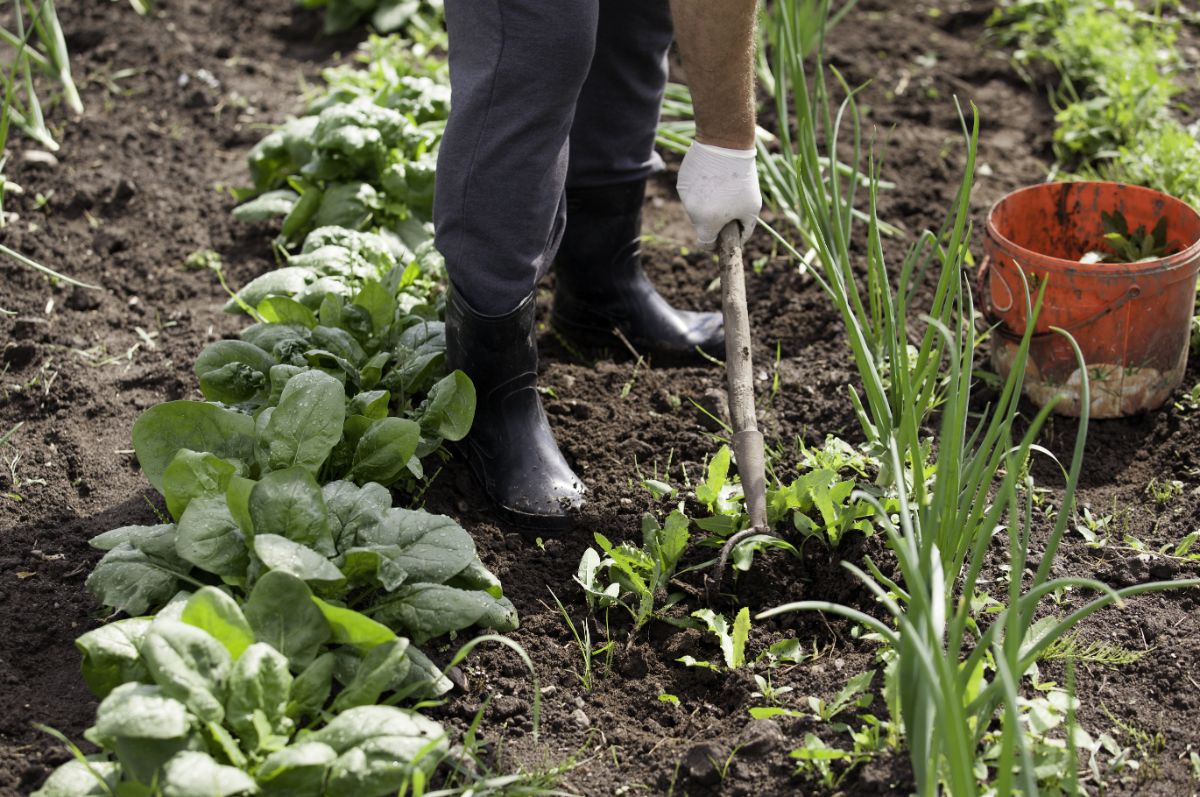
Due to their different sizes and shapes, certain garden hoe varieties are better suited for particular gardening tasks. If you’re on the hunt for the perfect garden hoe, check out the following list of popular hoe types for different outdoor chores.
1. Draw hoe
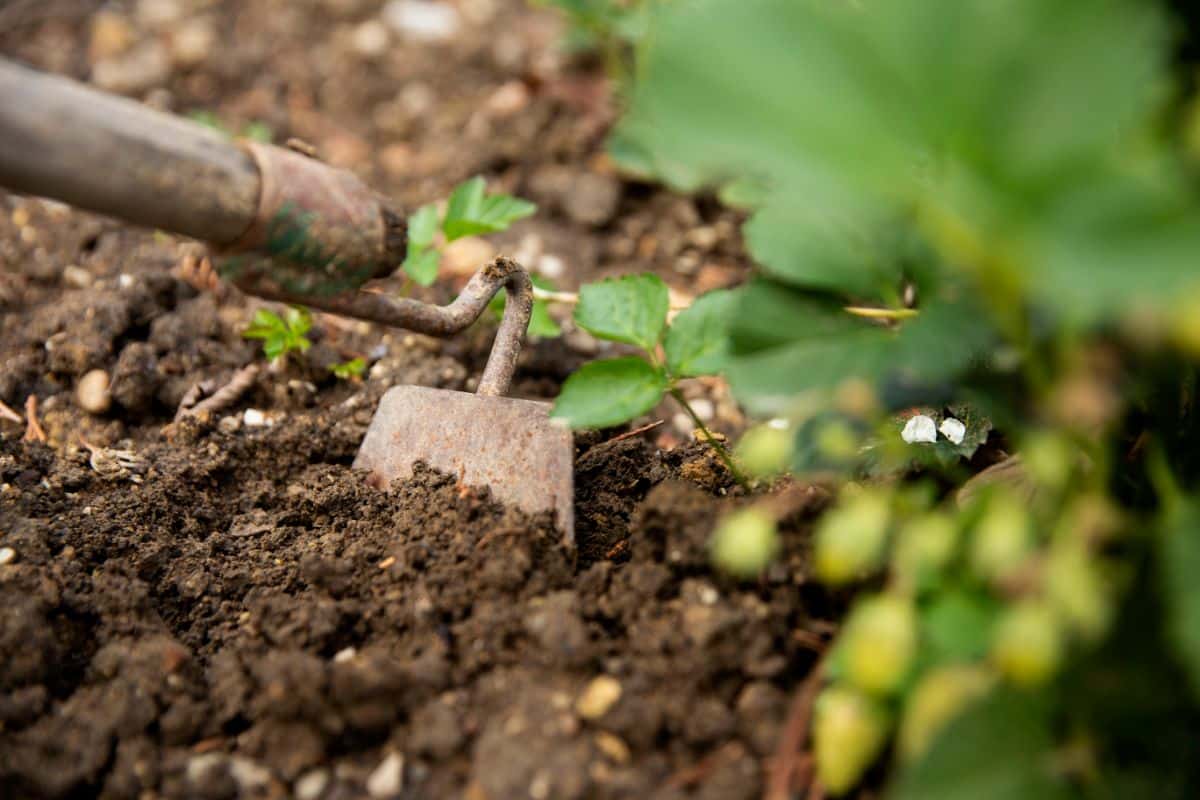
Draw hoes, sometimes also referred to as paddle hoes, feature a classic hoe design with a long, straight handle and a wide, flat blade. Because these hoes are not intended for digging deep into garden soil, blades are often lightweight for easier handling.
Draw hoes are usually used to break apart clumps of garden soil, loosen compacted dirt and remove weeds when prepping your garden for planting. They can also be used to move soil around, forming mounds or hilling soil as needed for planting corn or melon seeds.
2. Dutch hoe

Also known as a warren hoe or a push hoe, Dutch hoes work via a push-and-pull action to tackle weeds more efficiently. Unlike basic draw hoes, Dutch hoes have a flatter blade that joins the long wooden handle at approximately a 90-degree angle. This means this tool is easier to work with as you don’t need to struggle with angling the blade just so while you garden.
Ideal for clearing land and nipping off weeds right at their roots, Dutch hoes are quite pleasant to work with, but they are best suited for loose and soft soil.
3. Grub hoe

Also known as a grubbing or chopping hoe, grub hoes are another common gardening hoe that is used for digging and root removal. The heavy-duty blade connects to the handle at a 45-degree angle, which makes this tool perfect for cutting through tough root systems.
To use a grub hoe, simply drive the blade into your garden soil in a rapid series of downward motions, moving as quickly as is comfortable for you. Once the blade is in your soil, you can drag the blade towards you to sever root systems or lift the blade up quickly to minimize soil disturbance. Due to their weight and structure, grub hoes are best suited for use on flat landscapes and soils that are relatively free from rocks.
4. Heart-shaped hoe
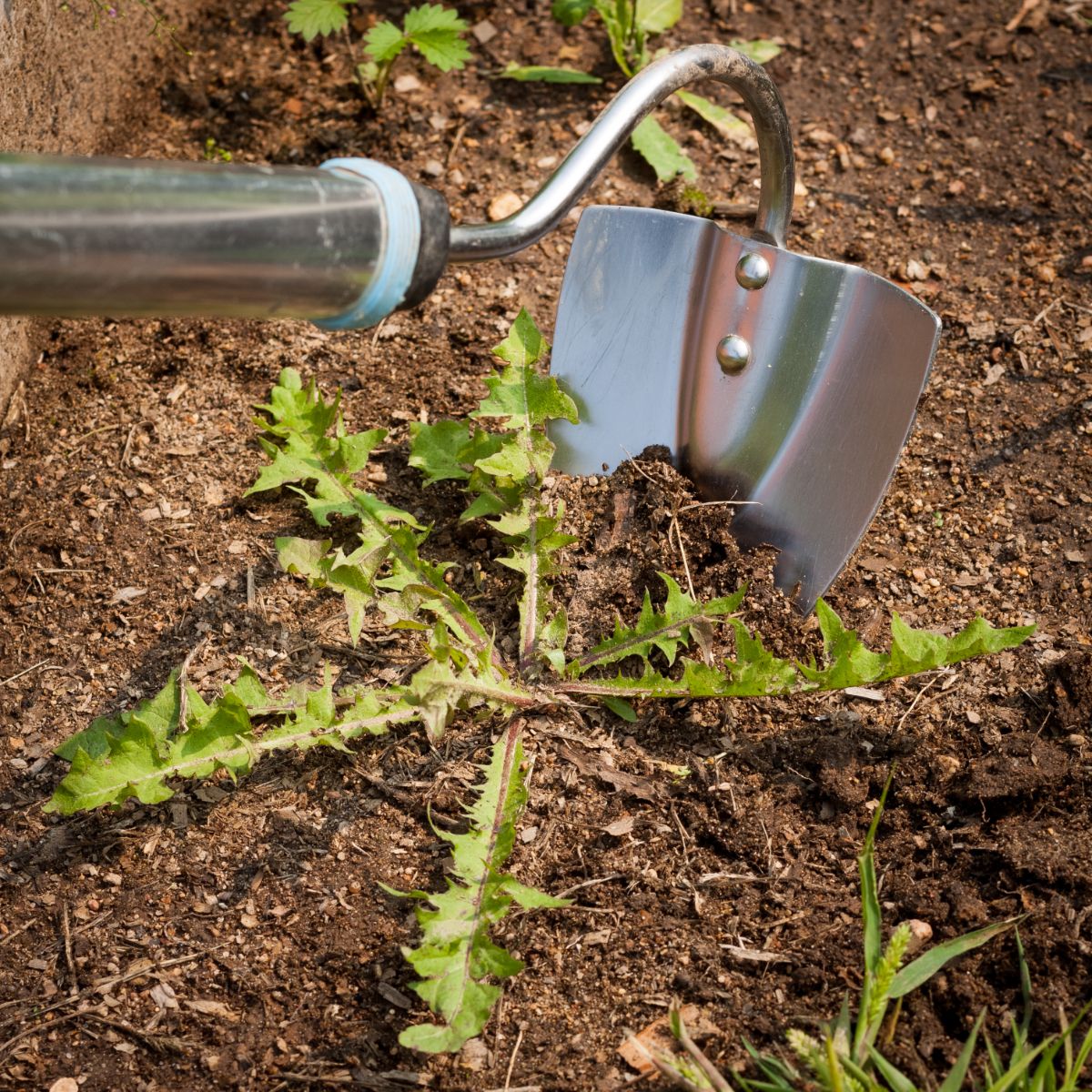
Heart-shaped hoes are elegant-looking instruments with long handles and uniquely angular blades. Their fine design makes them some of the best tools for working in hard-to-reach spots and tight corners, and they can easily navigate between plants. Just be sure to keep your heart-shaped hoe blade flat against the soil while you work for the best results.
Easier on the back than some other hoe varieties, heart-shaped hoes are used in a push-and-pull movement. In the garden, they can help break apart compacted soil and prep your garden beds for a season of planting. They also make quick work of tender weeds by nipping them off right at the soil line.
5. Scuffle hoe

Scuffle hoes are another very popular hoe type that can slice away at weeds by drawing the blade forwards or backward. This is because this hoe is sharp on both sides, so you know it will make your gardening chores go that much quicker! Just make sure you sharpen your blade regularly, as weeding will dull the blade over time.
Scuffle hoes can be dragged against the soil’s surface to remove weeds right at the soil line. However, for deeper root systems, angle your hoe about ¼ to ½” into the soil. Used in this manner, scuffle hoes can handle dense root systems with ease.
6. Swage hoe
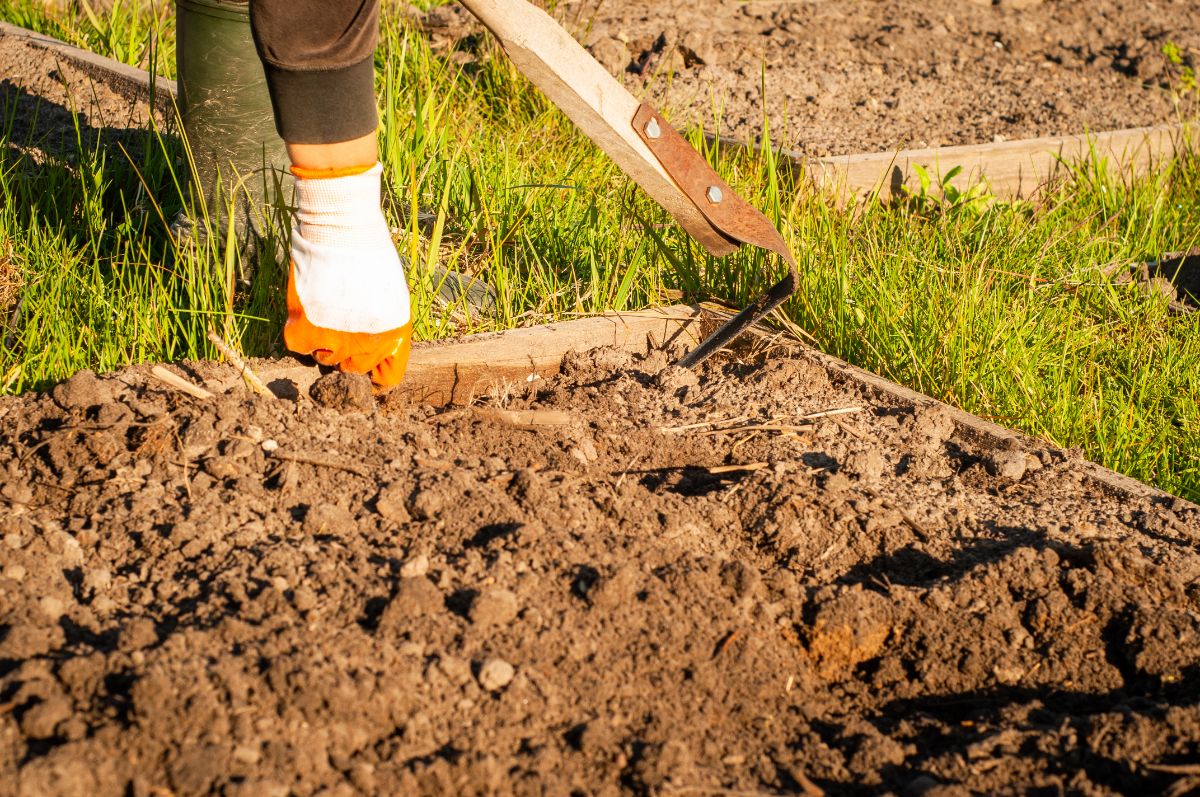
First created in Russia, swage hoes are sometimes called by their other name: Ploskorez hoes. A short and compact handheld hoe, swages hoes are very versatile and can be used for tons of different gardening tasks. They are perfect for slashing away at weeds, but they can also be used to mix fertilizer, compost, and other amendments into your garden soil!
Their pointed blades make swage hoes adept at pulling weeds in tight corners, too, and their sharp edges can be employed to make perfect trenches for seed planting or even mix up a batch of concrete for a garden DIY project.
7. Eye hoe
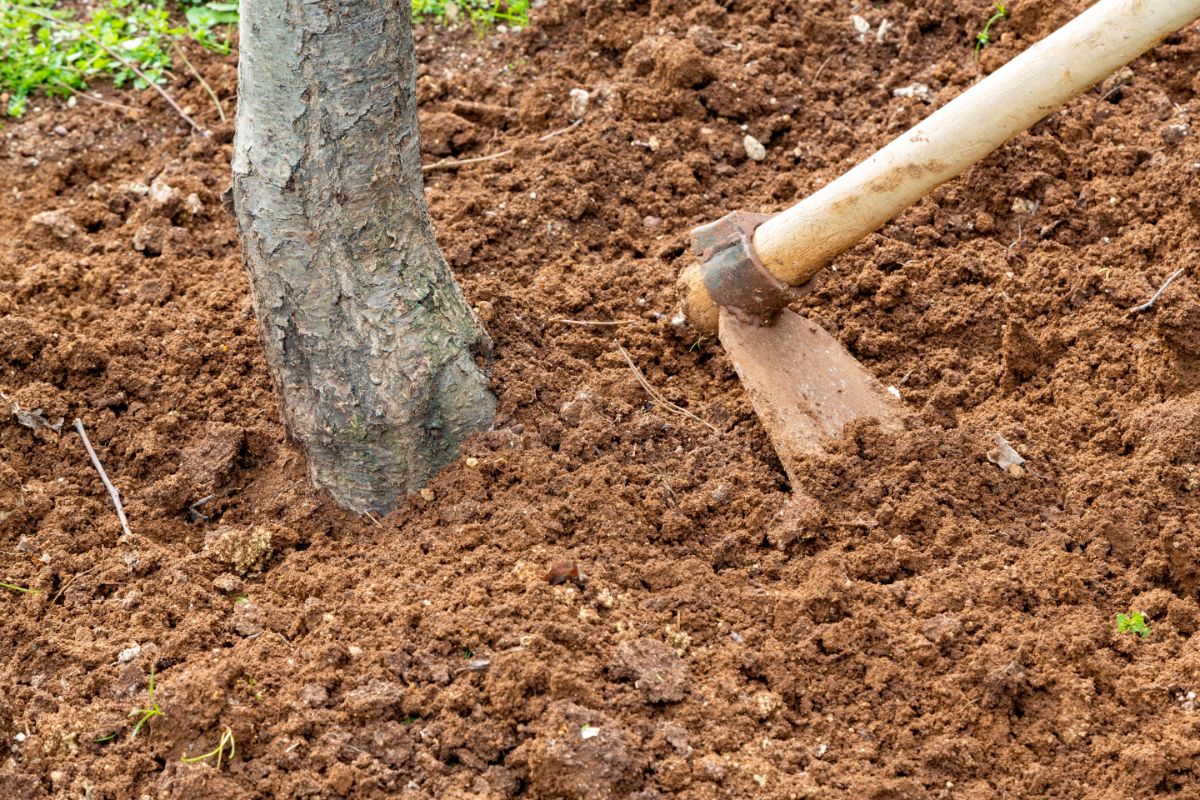
Eye hoes look a lot like grub hoes, but they are actually two different hoe varieties. Unlike grub hoes, eye hoes are primarily used for digging and usually have a slightly stouter appearance. Also known as a scovil hoe, eye hoes usually come with an ash handle, and they’re one of the oldest and most traditional types of hoes.
If you’re looking to remove large weeds or clumps of grass, eye hoes will do the trick. They are also excellent for uprooting smaller weeds when prepping your garden in the spring.
8. Collinear hoe

Also known as onion hoes, collinear hoes are used in a sweeping action to pull up small weeds right at the ground level. These hoes can be used both forwards and backwards to speed up weeding, and they work best when handled with short, stroking movements.
The long, thin handle should be angled in a mostly upright direction to give the thin, lightweight blade better access to weed roots just below the soil’s surface. A low-impact hoe, collinear hoes can be used near your vegetable and ornamental plants without causing damage to your plant's root systems.
9. Stirrup hoe
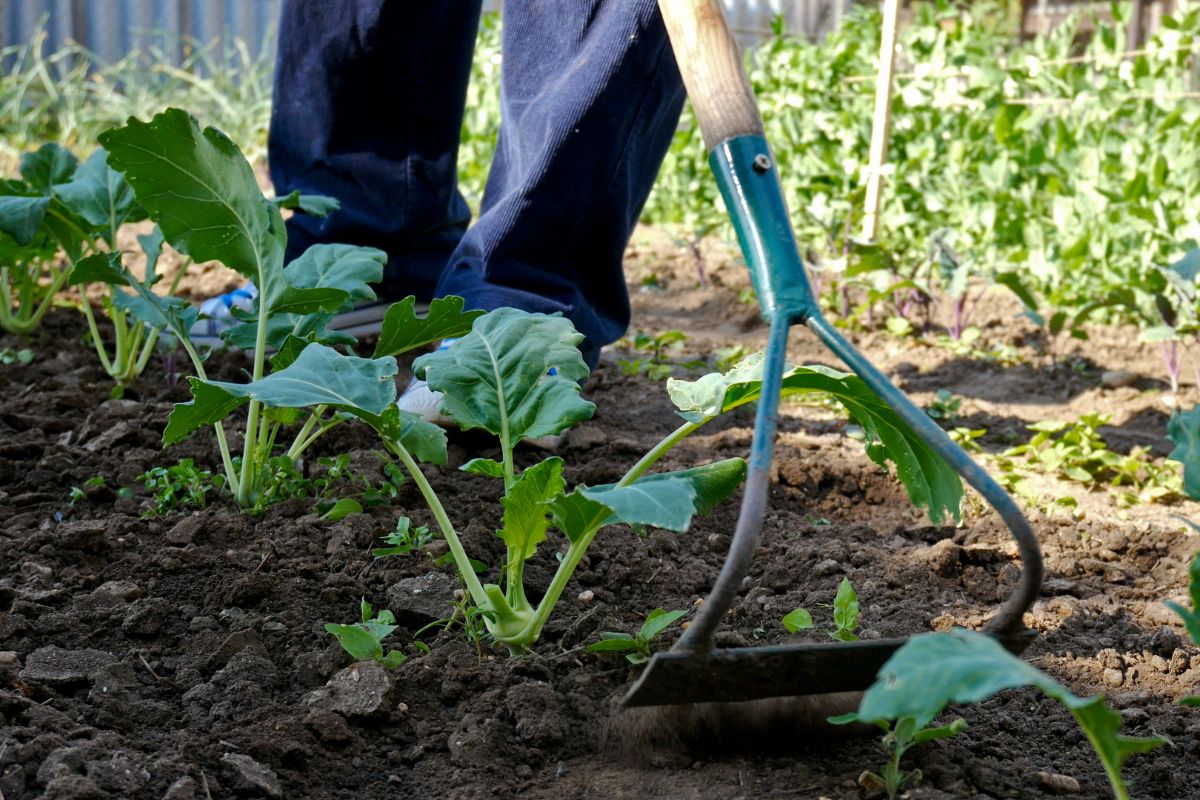
Also known as a hula hoe, stirrup hoes are one of the most popular types of gardening hoes. Used for weed removal between garden rows, stirrup hoes are categorized as reciprocating hoes. Their unique design features a long, wooden handle and a u-shaped blade that pivots to snip off weeds at their roots.
Able to be used in a push-and-pull movement, you can get about twice the amount of work done with a stirrup hoe in half the amount of time. Because they hit the soil at a low angle, they don’t disturb garden soil nearly as much as other hoe types. This means they are less likely to damage plant roots, and it also makes them one of the best choices for “weedless gardening” techniques.
A multipurpose gardening tool, stirrup hoes can also be used to aerate dry garden soil and to rake up pulled weeds for easier gathering.
Tips for using your gardening hoe
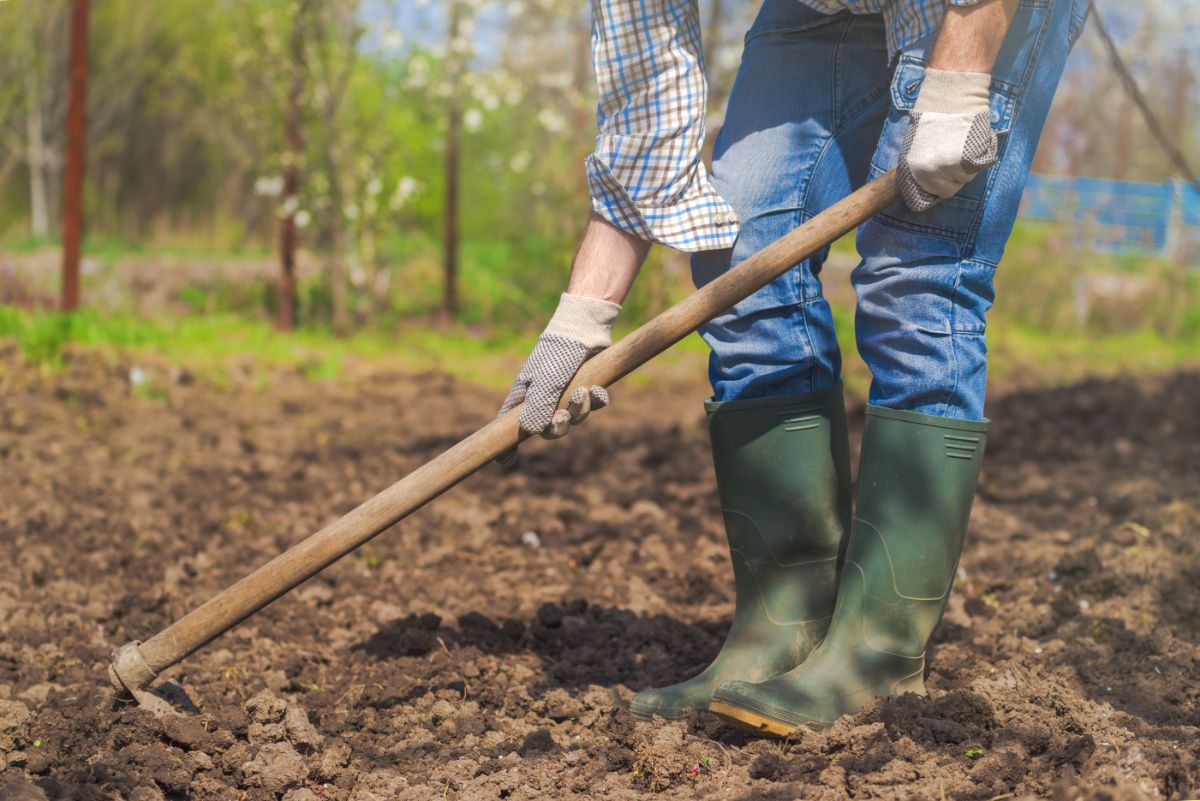
A gardening hoe can be an incredibly useful tool to employ in your vegetable and ornamental beds. Ideal for weeding and loosening up heavy soil, hoes can be used for seed planting and other garden chores too. If you’re new to working with a hoe, here are some tips to make sure you get the most out of your new tool:
- Time your hoeing for when weeds are still young and tender. Hoeing your garden at the right time will make it easier to clip off weed seedlings when they’re still young and before they develop strong root systems.
- The best time to hoe your garden is when the temperature is hot, and the soil is dry. Once you’ve hoed your beds, just leave the weeds in place on top of your garden beds, and they will wilt. As they decay, those weeds will also help build up the nutrient content in your soil (Note: this doesn’t work if your weeds have gone to seed).
- Applying linseed or tung oil to wooden handles will help your garden hoe better resist the elements.
- Vegetable oil rubbed on the hoe’s blade can prevent rust and other problems.
- Hoes need to be sharpened regularly with a file or sharpening stone. This will ensure that they work their best and help the blade to more easily cut through weed stems.
- Hoes with longer handles are easier on your back, but short-handled hoes can be better suited for small gardening spaces or for weeding in between tightly planted veggies.
- Use a collinear or Dutch hoe to lightly brush the top of your garden soil in a sweeping movement. This type of hoeing requires minimal effort and is perfect for removing small weeds.
- A draw hoe is a perfect solution for slicing off the top of larger weeds. Simply pull the hoe towards you, adjusting the angle of the handle to accommodate any unevenness in your garden beds.
- Draw hoes can also be used to dig a shallow trench for seed planting. Once your seeds are sown, simply pull the hoe over the soil line to gently cover up your seeds. This works best for larger seeds that need more soil coverage, like peas and corn.
Frequently asked questions
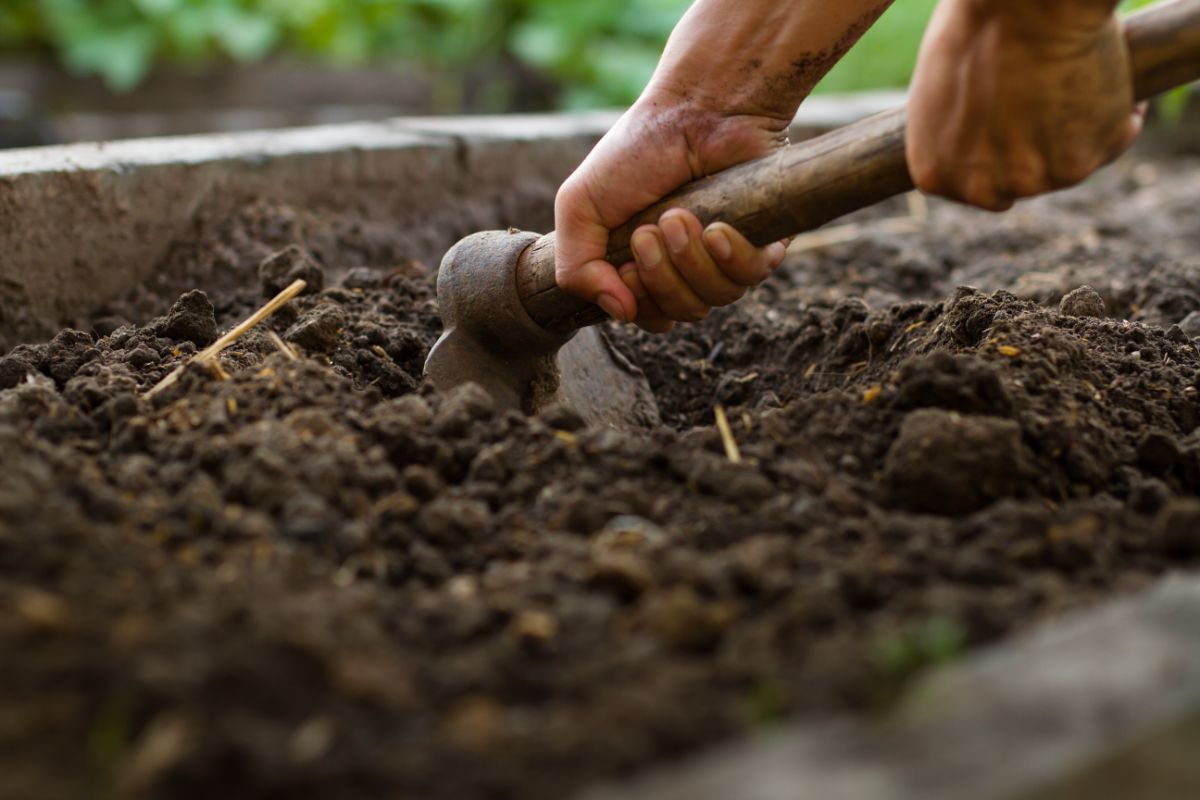
Hoeing can be used to accomplish many different gardening tasks. From removing weeds to digging small trenches for seed sowing to loosening up compacted garden soil, this multipurpose tool is a must-have in any gardener’s toolbox!
For weed prevention, you’ll want to hoe your garden regularly to keep any weeds from taking hold and develop strong root systems. For best results, aim to hoe your garden beds once every week or two throughout the growing season.
Stirrup or hula hoes are some of the most popular hoes for weeding. They create minimal soil disturbance and are safe to use around your plants, but they are also super effective at removing small weeds quickly.
Hoes work well on small and tender weeds, but large, established weeds may need to be dug out by hand. Weeds with long tap roots are best removed with a hori-hori gardening knife or a weeding fork.
Yes. A well-sharpened hoe will be able to slice through weed stems much easier than a hoe with a dull blade. You can sharpen your hoe with a file or a sharpening stone.
In order to prevent rust, garden tools should never be put away wet. Oiling wooden handles with linseed or tung oil and wiping down metal bits with vegetable oil can also keep your garden tools looking like new.
Summary
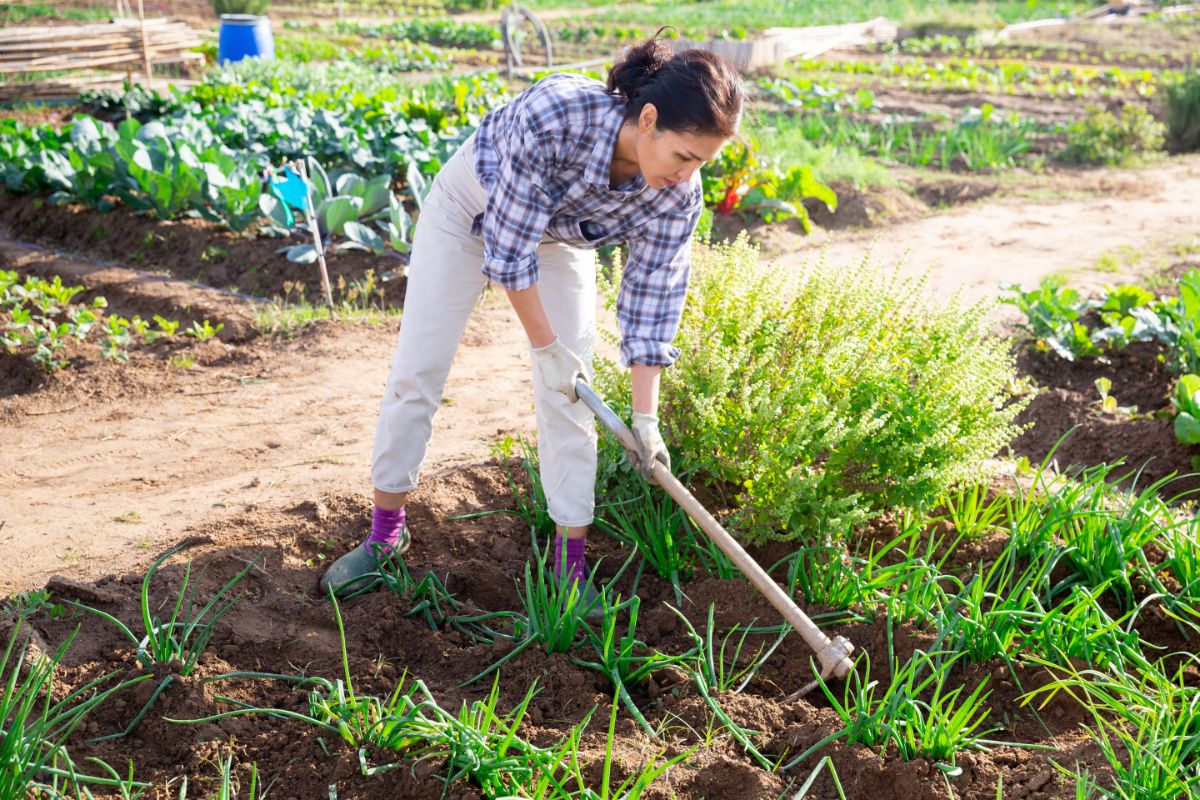
Garden hoes are classic tools for backyard landscaping, weed removal, planting, and so much more. Choosing the right hoe type for your outdoor project can simplify your work and make your weeding and other gardening tasks so much easier. So try out some of the garden hoes we’ve explored today and experience the beauty of a weed-free garden and well-kempt flower beds.
We hope that you found this article helpful! For more garden tool care tips, check out our guide on how to clean, maintain and store all your gardening essentials.

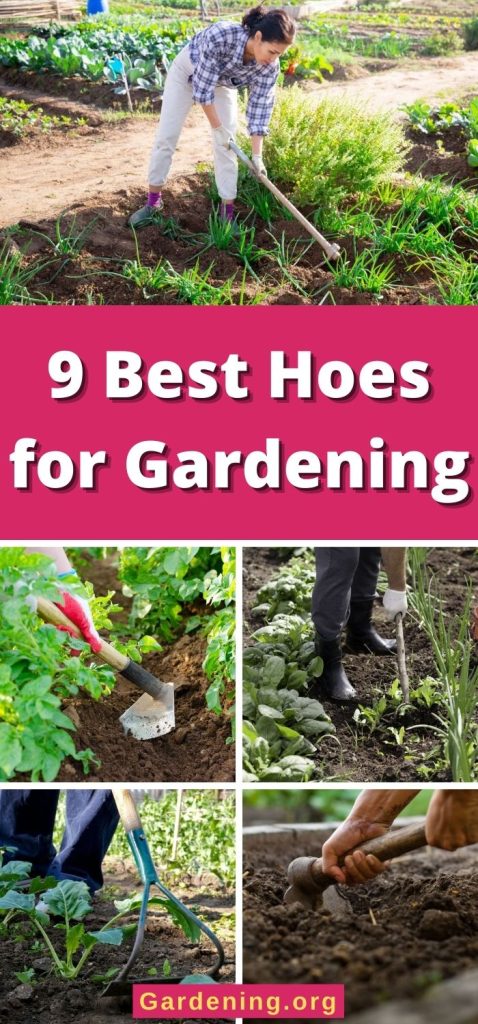
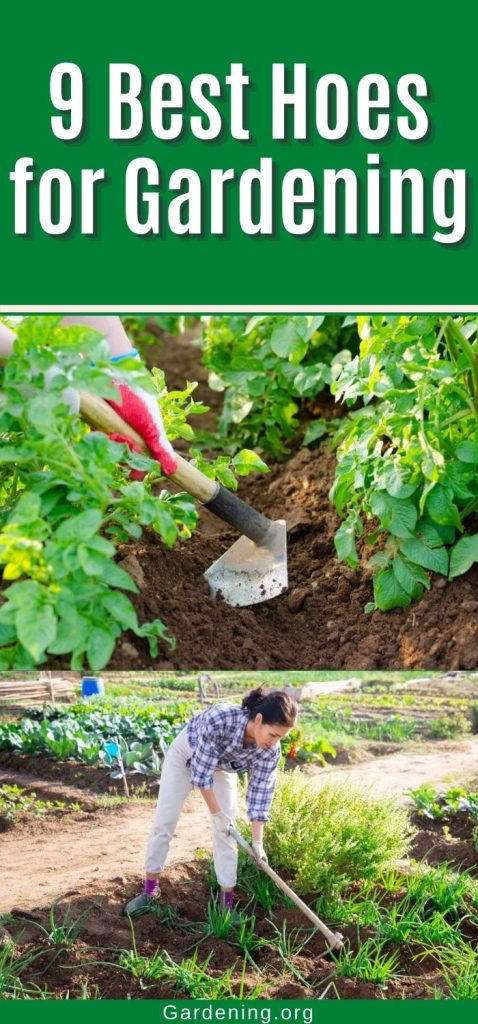
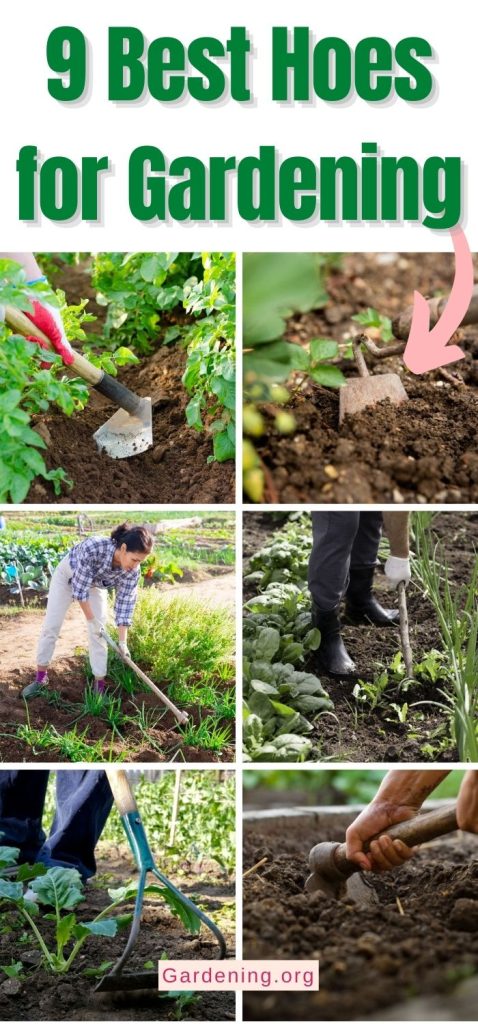
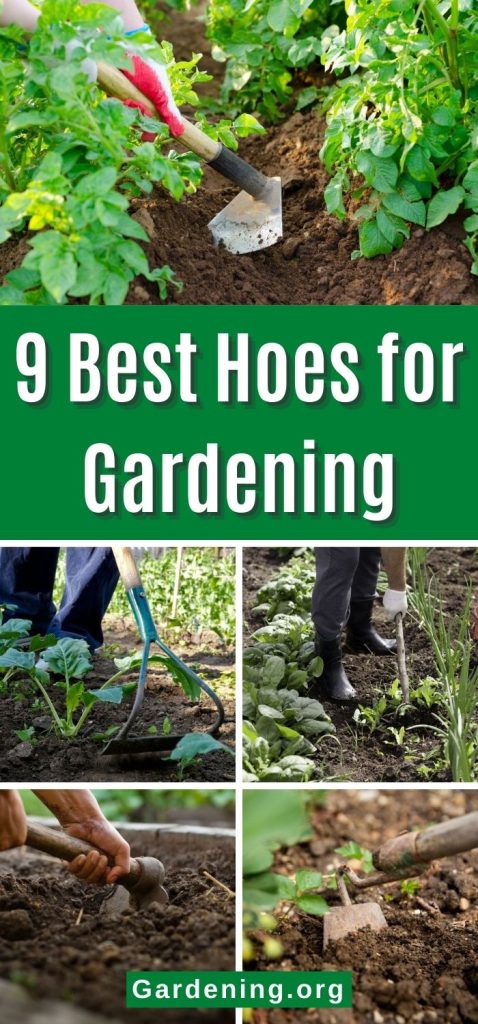




Leave a Reply